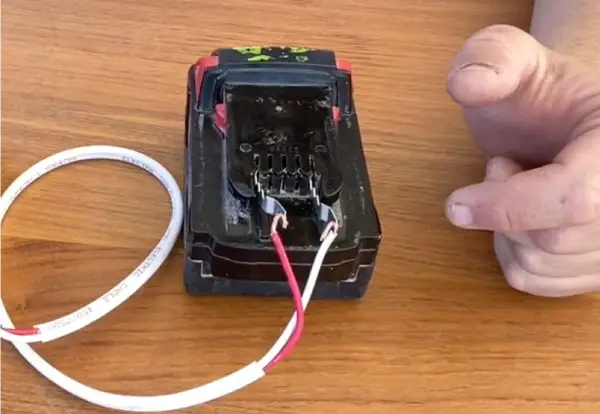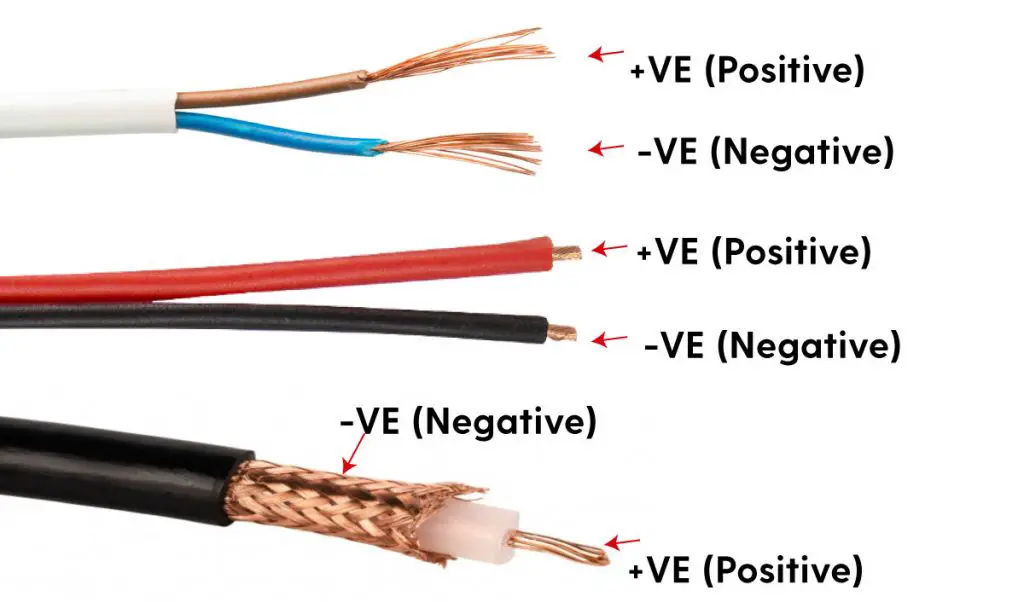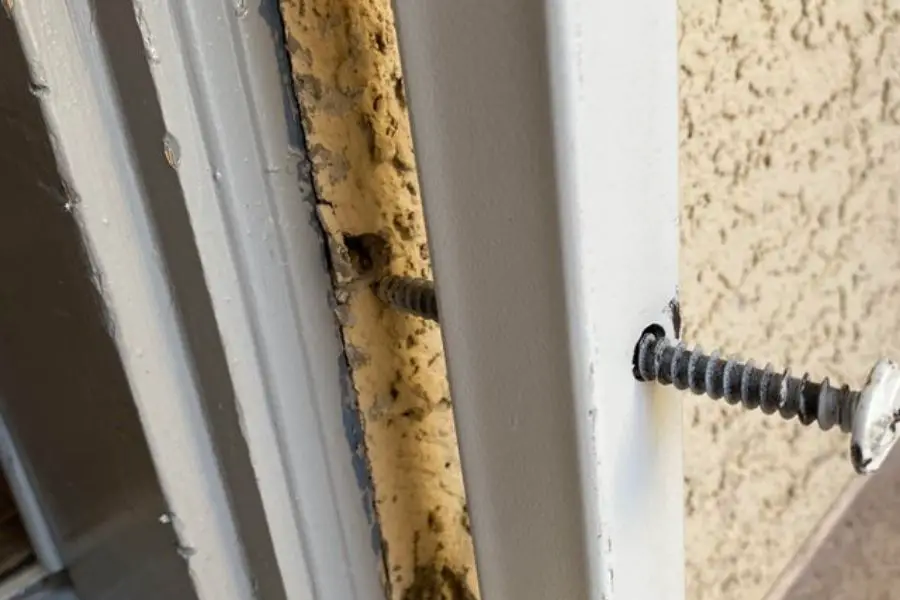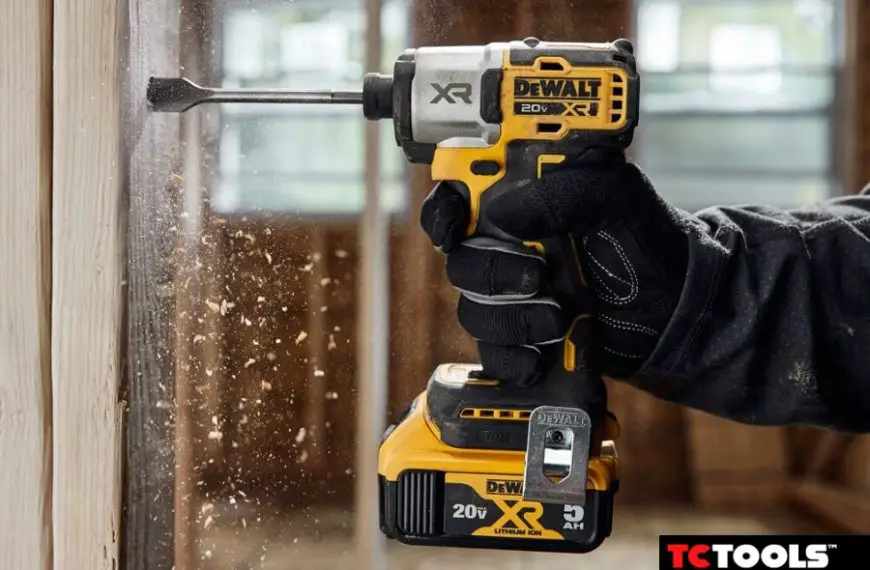Before I start, let me explain if 18V and 20V Lithium batteries are the same.
Both 18V and 20V Lithium batteries are the same.
A single Lithium Ion Cell is 3.7 Volts in its discharged state. 18/20V Lithium battery has five cells connected in series.
5 x 3.7V = 18.5 V
A fully charged Lithium Ion Cell is 4.2 Volts. So, the entire battery has a potential difference of 21.0 Volts when you charge it at 100%.
5 x 4.2V = 21.0 V
Some companies will refer to a Five Cell Series pack 18V, and others will call it 20V for marketing gimmicks. In the end, it’s the same battery.
For the sake of simplicity, I will call them 18V from now onwards in this article.
I am unsure what type of 18V battery you have, so I will provide a generic method of charging any 18V Lithium battery. But I guess it will be a cordless tool battery.

I don’t know why you are not using a dedicated charger, maybe it’s not working, and you don’t want to spend on a new charger.
However, I will recommend using the dedicated charger keeping the risks involved with handling fully charged batteries.
How to Charge an 18V Lithium Battery Without a Charger?
The best way to charge an 18V Milwaukee Lithium battery is by using an old 18/20V laptop charger or a variable DC voltage adapter that can provide an 18V DC output.
Using a universal drill battery charger is another cheap and VERY-SAFE method of charging an 18V Lithium Drill Battery.
The science behind charging an 18V or 20V Lithium-Ion battery is the same as charging any battery without a charger.
18V Battery Terminals
An 18V lithium-ion battery can have different types of terminals, as shown in the image below.
The ones most essential for us are the +Ve and -Ve terminals, as we only need these two to charge an 18V Lithium battery.

Positive Terminal (+VE):
The first terminal you should look for is the +VE (Positive) terminal. When charging this battery, make sure to connect your source’s positive terminal with this terminal.
Other Terminals:
There can be an additional 2-3 terminals usually used to communicate the state of charge, temperature, type of battery, etc. You should ignore these terminals if you are planning to charge your 18V battery using some hacks.
Negative Terminal (-VE):
The other important terminal is the -VE (Negative) terminal. When charging this battery, make sure to connect your source’s negative terminal with this terminal.
How to charge an 18V Lithium Battery? [BASICS]
The basic science of charging an 18V Lithium battery is to provide the 18-20V DC voltage at both terminals by connecting the voltage source’s positive terminal with the 18V Lithium battery’s positive terminal and the voltage source’s negative terminal, the negative terminal of the 18V Lithium battery.
Note: The Actual Voltage of an 18V Lithium Battery is 18.5 Volts. The battery terminals will show 21V when fully charged battery. That’s why it is recommended to charge it at 20Vs.
Below is a schematic of an 18V Lithium battery charging.
The voltage source in the first setup on the left is 0V, so the 18V Lithium battery is not charging yet.
However, once the voltage source is switched to 18.0V, it charges. It would be best if you bumped it up to 20V to fully charge it.

Once the voltage goes up to 18 V, it starts charging. In reality, it is not that simple. The charging starts as soon as the potential difference rises.
This means that if an 18V Lithium battery got discharged and went down to 10V, it will start charging as soon as you connect a voltage source above 10. The charging rate is also directly proportional to the voltage difference.
Quick Tip: Get this inexpensive voltage meter by Amazon Basics to properly check your battery voltages while you charge and discharge it. (An expensive one by FLUKE for some serious SCIENCE)
If your 18V Lithium battery has discharged to 10V and you have connected it with an 18V voltage source, it will start to charge quickly, and as it approaches 18V, the charging speed will drop significantly.
This same technique is also used in Fast Charging. A higher voltage is applied than the rated voltage of the rechargeable battery at the beginning of the charge cycle. Then, it is carefully reduced to the battery’s rated voltage when it approaches full charge.
The advertised battery voltage of 18V Lithium batteries is 18V or 20V. But a fully charged Lithium-Ion battery must be charged to 21 Volts before the battery indicator will show a 100% level.
So, charge your battery at 20V to 21V volts if you want a full charge.
These variable voltage sources are expensive, but you can get this option from Amazon at a reasonable price. This is another very cheap alternative, but the quality is not outstanding.
Caution: Fast charging needs a proper BMS (Battery Management System) to avoid mishaps or explosions. All batteries are not designed to stand fast charging as a lot of heat is produced when you fast charge a battery.
Hacks to charge an 18v or 20V Lithium Battery without a charger
Now, let’s move on to the most exciting part: how to charge an 18V Lithium battery without the official charger at home when you don’t have a variable voltage source or official charger.
Before you move on to the hacks, I recommend using the dedicated charger, which is usually not super expensive (around 20$-40$) and will save you a lot of effort and RISK.
So, let’s come to the point. As discussed earlier, you only need a 20V voltage source to charge a 20v / 18V Lithium battery.
Following are a few ways you can get that desired voltage:
- Laptop Charger – 18-19V Voltage Source
- Simple AA Cells – Any amount of voltage can be built up
- Cheap Voltage Regulators/Converters
- Another 20V Drill Battery
- Solar panel
Charge an 18V Lithium Battery with a Laptop Charger
Most laptop chargers are rated for 18-20V, which is very suitable for charging an 18V battery.
The process is simple.
Get hold of an old laptop charger. Confirm the voltage output by reading the printed label on it.

Once you have confirmed that the output voltage is above 18, you have two options.
Option One:
Cut the charging connector and connect the two wires to the 18V Lithium battery. Cheap and easy method. You can resolder the wires after completing the job.

Color Codes of +VE and Negative:

If you are not sure about the color codes or the colors are different, do a quick google search for with the laptop charger brand name.
Option Two:
This is a little sophisticated method. Try to find a female connector for the charger you already have.
If it’s a universal charger, these connectors will work. Else you will have to cut down the wire and connect these connectors as mentioned above.
For a permanent solution, solder the female connector with the internal battery connections (Positive with positive and negative with negative).
Make a cut hole for the female connector to sit in; voila, you can charge your battery without the official charger.
Using An Apple MagSafe Charger
An Apple Macbook charger (The old Megsafe one) is rated at 14/16/18/20V. You can quickly charge your 20v or 18V Lithium battery with the 18-20 volt chargers. Do check the output voltage ratings on the back of the charger.
Again, the process is simple: connect the laptop charger’s positive terminal with the 18V Lithium battery you are charging and the negative terminal of the laptop charger with the negative terminal of the 18V Lithium battery you are charging.
For Apple MagSafe chargers, you will have to go for Option One, where you will have to cut down the Magsafe connector.
Note that the center’s wire will be the positive terminal, and the outer mesh will be negative. Caution: This will irreversibly damage your MagSafe charger.
Charging 18V Lithium Battery With Off-the-shelf 1.5V AA Cells
This is an expensive and inefficient way, but it can be life-saving. In an extreme case, when you can’t find any voltage source, you can get hold of simple off-the-shelf 1.5V AA Cells and connect them in series to make up the desired voltage (A voltage equivalent to the battery you are going to charge).
Connect 13 cells in series for a total of 19.5V to charge the 18V battery. They may not fully charge your battery as these cells have a minimal capacity. The charging speeds will be dead slow as well.
You can also get hold of rechargeable AA cells, and they mostly come with a charger, but that will be an expensive route. Still, worth sharing.
Charging an 18V Lithium battery with a Cheap Voltage Adapter
The process is the same as in laptop chargers, but cheap voltage regulators are available at electronic shops and online.
Get an 18V adapters from Amazon, which will work great. I found this one to be pretty convincing. It is cheap (Under $15) and has many connectors to connect with the 18V Lithium battery.
- Input: AC 100~240V, 50/60Hz ; Output: DC 3~24V Adjustable, Max 1A 24W
- It comes with an original 5.5x2.5mm tip and 14pcs frequently used tips
- The 24W all-in-one multipurpose AC/DC adapter
- Built-in multiple safety protection systems.
This version comes with many connectors you can use with your 18V Lithium battery for a long-run solution.
You may find these already lying around at your home, which may have come with electronic devices like Bluetooth speakers, min fans, or toys. Do a thorough search.
Jump Charging 18V Lithium battery with another 18V battery
Jump charging a 18V Lithium battery with any fully charged 18V battery is also a great hack.
For example, if you have another drill battery with a working charger, you can use that drill battery to charge your battery.
Again, science is the same. Ensure the other battery is of the same 18v voltage and fully charged.
Now connect the terminals in the same polarity. Positive with positive and negative with negative.

As shown in the image above, you must use jump wires for the connections. It will not be a solid solution, but it can work in an emergency.
Check this video for a demo.
Charging a 18V Lithium or 20V Battery With a 20V Solar Panel
Solar Panels are a great source of DC Voltage Source. However, there is one problem. The Output voltage is not constant and varies due to the change in sun’s direction and temperature.
You can buy pre-built panels with voltage regulators etc. However, they are expensive.
- Compatible with Most Devices
- Design with Kickstands and Auto-restart
- IP54 Waterproof & Durable Design
- Portable and Highly Efficient Monocrystalline Panels
- Best Quality and Service Support
Here is a sound 20V solar system that can charge a 18V Lithium battery without a charger.
If you already have a solar panel, make sure the panel has an output of 20Vs.
Caution: These are all hacks; you shall perform them with extra care and precaution.







